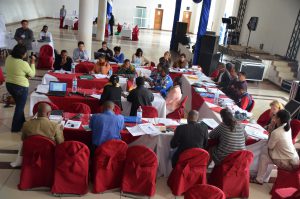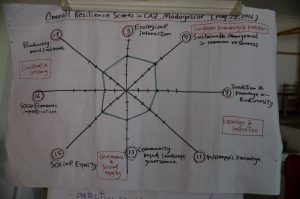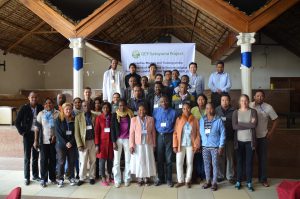Workshops and Training Opportunities
Report – Inception Meeting and Indicators of Resilience Training in Madagascar and Indian Ocean Islands Biodiversity Hotspot[Moramanga, Madagascar]
2016.08.25
INCEPTION MEETING
The inception meeting was held on August 24, 2016 at the Le Louvre Hotel with the following objectives:
• To ensure all subgrant project proponents to have the common understanding about the GEF-Satoyama Project and its requirements
• To take the first step in mainstreaming the SEPLS in development policy and plan (introduction to government representatives)
• To be familiar with other subgrant projects
Highlights
1. Welcoming remarks and an overview of the GEF-Satoyama Project were given by Dr. Yoji Natori, Manager of the GEF-Satoyama Project.
2. The meeting was graces with the presence of Mrs. Hanta Rabetaliana, Secretaire General of the Ministry of Environment, Ecology and Forests of Madagascar; Mr. Liva ramiandrarivo, Directeur General des Forêts- Ministry of Environment, Ecology and Forests; Mrs. Edmée Ralalaharisoa, GEF Operational Focal Point/ Directeur General de l’Environnement; Mr. Mohamed Abderemane Abdouchakour, Head of Application Research and Adjoint Operational Focal Point on GEF Comoros, Vice- Présidence in Charge of Production, Fishing and Environment; Mr. Mze M’Madi Tourouki, Assistant on the Operational Focal Point on GEF Comoros, Vice- Présidence in Charge of Production, Fishing and Environment and Mr. Mouhoudhoir Boura, Director of the Environment, Anjouan Commissariat of Environment and Agriculture.
3. Presentations were made by representatives of the subgrantees of the hotspot about their respective projects. Ms. Mohamed Siti represented Dahari, Ms. Estelle Dorothée Deja represented EPCO, Mr. Arjan de Groene represented GIF, while Dr. Petra Lahann represented WCS.
4. GEF-Safeguards, financial and technical reports were made by Dr. Devon Dublin, Project Coordinator, GEF-Satoyama Project.
5. The GEF-Satoyama Project’s website and the logo was presented by Dr. Yoji Natori.
INDICATORS OF RESILIENCE IN SOCIO-ECOLOGICAL PRODUCTION LANDSCAPES AND SEASCAPES
A training on the Indicators of Resilience in Socio-ecological Production Landscapes and Seascapes was held in Moramanga, Madagascar, during August 25 – 27, 2016. Through a classroom training and field practical training, the training aimed to build capacity of GEF-Satoyama Project subgrantees and others on using the “Resilience Indicators in Socio-ecological Production Landscapes and Seascapes (SEPLS)” during the project management
cycle. This was the second of the three regional trainings, which will be followed by one in Ecuador, the previous one was held in Thailand.
Objectives:
● Develop strong knowledge about the “Indicators of Resilience in Socio-ecological Production Landscapes and Seascapes (SEPLS)”
● Enable to organize the resilience assessment and develop resilience strengthening strategies at the landscape/seascape level by communities
● Understand ways to enhance communication among stakeholders and empower communities in decision-making process and adaptive management for the conservation and sustainable use of biodiversity at landscape/seascape level.
Language:
English, French and Malagasy
Participants
A total of 37 persons participated from Comoros, Japan, Madagascar, Mauritius and Seychelles. Japan based trainers from the Institute for Global Environmental Strategies (IGES) and Conservation International Japan conducted the training. These participants were representatives of the subgrantees in Madagascar and Indian Ocean Islands, namely, Dahari, Environmental Protection and Conservation Organization (EPCO), Green Islands Foundation and World Conservation Society (WCS); as well as government representatives from Comoros. Participants were also fielded from Ny Tanintsika and Tany Meva Foundation. Members from the local region of CAZ participated in the practical sessions of the training.
Feedback
● On the general conduct of the training and the organization of the training, 93.75% participants rated it highly.
● All participants felt that the training achieved its objectives and 93.75% of them expressed that their expectations were met.
● Participants found a wide cross section of the training material to be useful with 56.25% of them expressing that the training will be definitely useful and 31.25% mostly useful for their job.
Photos




